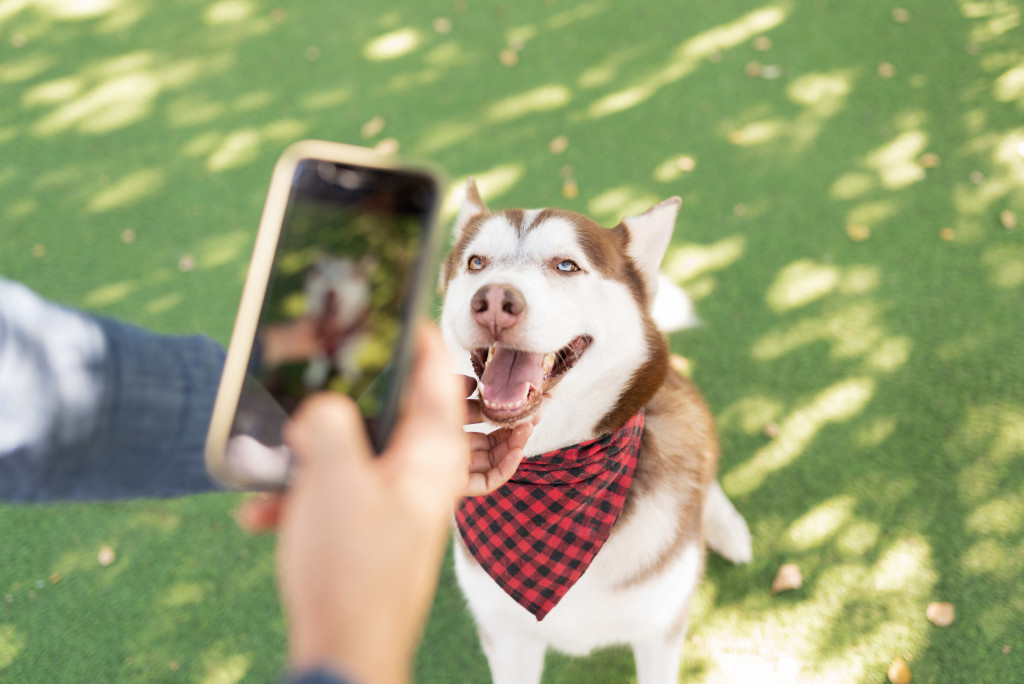Disclaimer: The Purple Feather. This site provides fashion and lifestyle content for informational purposes only.
With the pet apparel market projected to reach $6.3B, now is a great time to get into pet fashion. Pet styling can be a fun way to bond and show off your pet’s unique style. But before you start dressing and grooming them, it’s important to know how to do it properly.
Teach them how to pose.
Teaching your pet how to pose will allow you to get the best photos and capture their outfits or looks. Start small with this by getting them used to being around a camera first. Place the camera near them and reward them for staying calm. When they’re comfortable enough, move the camera closer or try taking some pictures with it.
No matter what type of pet you have, treats are an excellent tool for teaching them how to pose. Give them a treat after they successfully stay in position or when they look directly at the camera lens. It’s important not to give them too many treats throughout your session; otherwise, they may become unruly and unfocused.
Also, props are an excellent way to make any photo more interesting and creative. Try introducing props such as hats or scarves into the mix—your pet may even enjoy playing around with different objects while looking stylish in their photos. Just make sure that any props are safe for pets before using them in your sessions.
While doing this, remember that training your pet isn’t something that can be done all at once—it takes patience and dedication. Make sure that you take regular breaks throughout your session so that your pet doesn’t become too tired or frustrated. This will also give you time to reset and develop new ideas if needed.
Above all else, don’t forget that training your pet is always a learning process—one that requires patience and understanding from both parties involved. Don’t get upset if things don’t go as planned—just take it slow. You can even try looking into some board-and-train services to see if that works well for you and your four-legged friend. And most importantly, have fun, and remember that this should be fun for everyone involved.
Groom them regularly.
Brushing your pet’s fur helps remove dirt and debris and also helps to keep their coat free from tangles and mats. Depending on the type of fur your pet has, you may need to brush it daily or weekly. Be sure to also use a brush that’s appropriate for the type of fur your pet has—long-haired pets will need a different kind of brush than short-haired ones. In addition, consider using a natural bristle brush or comb instead of plastic bristles, as these can cause irritation and damage your pet’s fur.
Aside from brushing, bathing is also an important part of keeping your pet groomed. In fact, one of the essential grooming tips for dogs is to bathe them at least once a month (or more often if they’re particularly active). Make sure you use a shampoo specifically for pets, as human shampoos may be too rough on their sensitive skin. Also, rinse thoroughly; soap residue can cause irritation and dryness in their coat.
Trimming is another important part of keeping your pet looking neat and tidy, especially if they have long hair or thick fur around the face, feet, or tail area. To ensure that you don’t trim too much off, start with small trims and slowly work your way until you get the desired look. You should also consider taking them to a professional groomer if you’re not comfortable doing it yourself; this will ensure that you don’t accidentally hurt them in the process.

Choose the right sizes.
The first step to finding the right size of clothes for your pet is getting accurate measurements. Measure around the widest part of your pet’s chest and neck, and measure from the base of the neck up over the shoulder blades. Also, measure from the base of your pet’s tail up to its neck or collar area. If you have a long-haired pet, be sure to push their fur aside when taking these measurements so that you get accurate numbers.
Write down these measurements and keep them handy when shopping for clothes. Once you have measured your pet, you can then compare their measurements against sizing charts offered by most companies that sell pet clothing. These charts will provide you with information like length (L), width (W), neck circumference (NC), and chest circumference (CC). Be sure to compare all four of these measurements against those provided by each company; this is key in determining whether or not a garment will fit properly on your pet.
Also, the material chosen for the garment matters when it comes to sizing. Some fabrics stretch more than others, while others may be more rigid when wet or dampened with sweat. Consider what fabric will best suit your needs before selecting an item. Cotton might be a good choice if you’re looking for something lightweight but breathable, whereas wool might work better if you need something warmer and thicker.
Styling your pet can be an enjoyable experience for both of you if done correctly. With these tips in mind, you can safely and confidently style your furry friend without worrying about hurting them or damaging their fur. Remember that comfort should always come first when choosing a style for your pet—and with patience and practice, you can get your desired result.

